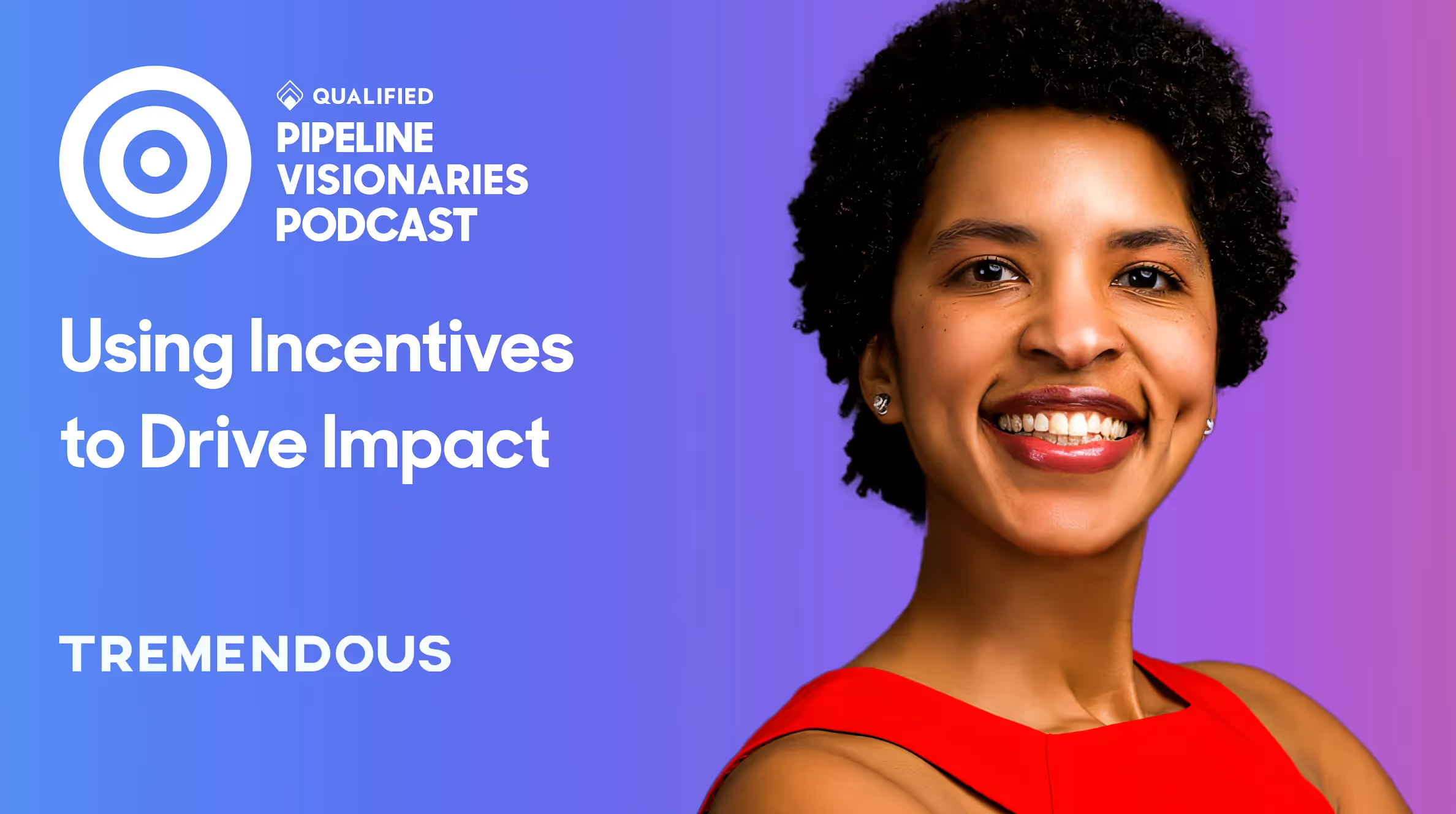Using Incentives to Drive Impact
Dana Barrett, VP of Marketing at Tremendous, shares about incentivizing your ideal customer.




Dana Barrett, VP of Marketing at Tremendous, shares about incentivizing your ideal customer.

This episode features an interview with Dana Barrett, VP of Marketing at Tremendous, a company that offers a simple way to send rewards and payouts around the world.
In this episode, Dana discusses the ways that incentivizing your ideal customer provides impact across use cases, whether you are looking to build pipeline, drive sales, get participants in studies, etc. She also talks about carefully identifying your target persona and focusing on a small number of priorities.
Key Takeaways:
Stay up to date with weekly drops of fresh B2B marketing and sales content.
Dana Barrett, VP of Marketing at Tremendous, shares about incentivizing your ideal customer.


This episode features an interview with Dana Barrett, VP of Marketing at Tremendous, a company that offers a simple way to send rewards and payouts around the world.
In this episode, Dana discusses the ways that incentivizing your ideal customer provides impact across use cases, whether you are looking to build pipeline, drive sales, get participants in studies, etc. She also talks about carefully identifying your target persona and focusing on a small number of priorities.
Key Takeaways:
Stay up to date with weekly drops of fresh B2B marketing and sales content.
Dana Barrett, VP of Marketing at Tremendous, shares about incentivizing your ideal customer.


This episode features an interview with Dana Barrett, VP of Marketing at Tremendous, a company that offers a simple way to send rewards and payouts around the world.
In this episode, Dana discusses the ways that incentivizing your ideal customer provides impact across use cases, whether you are looking to build pipeline, drive sales, get participants in studies, etc. She also talks about carefully identifying your target persona and focusing on a small number of priorities.
Key Takeaways:
Stay up to date with weekly drops of fresh B2B marketing and sales content.
Dana Barrett, VP of Marketing at Tremendous, shares about incentivizing your ideal customer.



This episode features an interview with Dana Barrett, VP of Marketing at Tremendous, a company that offers a simple way to send rewards and payouts around the world.
In this episode, Dana discusses the ways that incentivizing your ideal customer provides impact across use cases, whether you are looking to build pipeline, drive sales, get participants in studies, etc. She also talks about carefully identifying your target persona and focusing on a small number of priorities.
Key Takeaways:
Discover how we can help you convert more prospects into pipeline–right from your website.